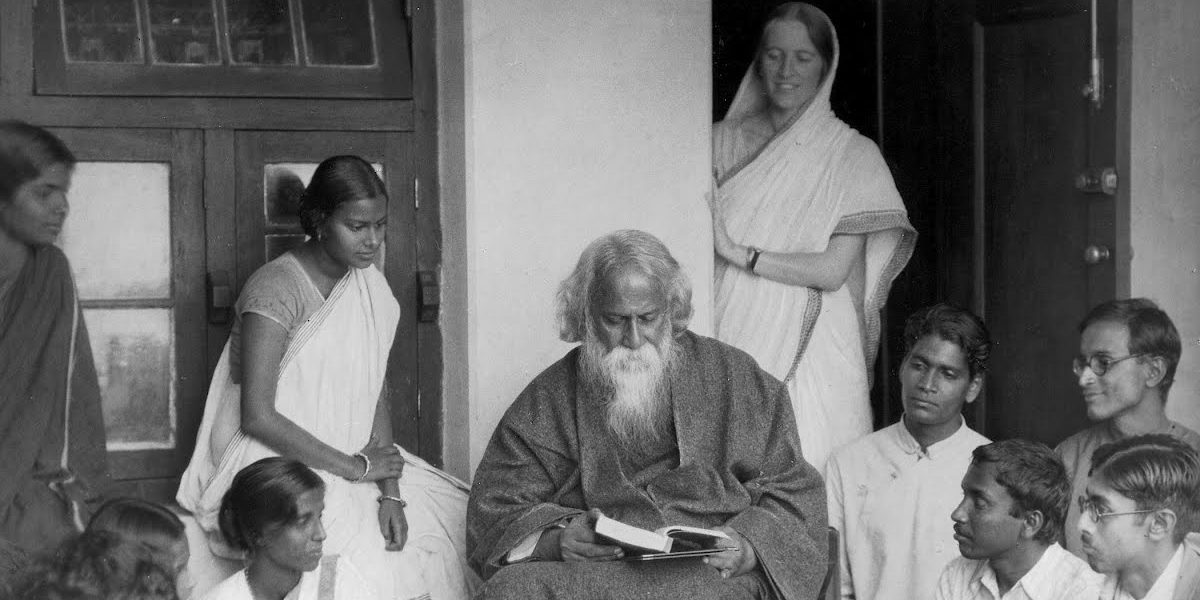Photo, courtesy and © Monish Sengupta
On 7 July 2011 in the heart of London, HRH The Prince of Wales unveiled a bust of India’s greatest artist Rabindranath Tagore in Gordon Square to celebrate the poet’s 150th Birth Anniversary.
The Tagore Centre UK organised the campaign to install the bust and raised funds via an appeal. Kalyan Kundu, founder and chairperson of The Tagore Centre UK said he was unsure whether the Centre, struggling for funds, had a secure future, but the Tagore memorial – a symbol of peace – was being left behind as a legacy for future generations.
The bust was sculpted by the artist Shenda Armery who has previously made ones of former Prime Minister Margaret Thatcher and former House of Commons Speaker Baroness Betty Boothroyd.
The ceremony was simple but moving and was set amongst the greenery of Gordon Square. Even the downpour of the morning rain had stopped and the sun emerged as Prince Charles arrived and was greeted with applause from a large gathering of distinguished guests and friends.
Prior to the unveiling there was a performance of Tagore songs by members of The Tagore Centre UK and four professional dancers who braved conditions to give a sterling performance for His Royal Highness.
In his opening speech Kalyan Kundu said: “Today we have gathered here together to witness the historic unveiling of this bronze sculpture of Rabindranath Tagore… a poet, philosopher and a myriad-minded Renaissance man of India. This is indeed a historic event as this is the first time a sculpture of Tagore has been installed outdoors in the heart of London and very close to the academic institution where he was a student in 1878.”
Artist Shenda Armery, HRH The Prince of Wales and Kalyan KunduPhoto, courtesy and © Monish Sengupta
He also mentioned how Rabindranath Tagore not only made modern art in India, but also shaped the minds of modern India herself and was also a champion of the ‘one-world’ philosophy.
Mr Kundu poignantly remarked, “the 7th of July marks one of the darkest days in our history. Six years ago on this day, and not far from this place, London experienced a terrible atrocity where we lost many innocent brothers and sisters due to the mindless act of a few misguided and easily influenced extremists…” and that “…the unveiling of a statue of an apostle of peace, here in Gordon Square is a significant and timely reminder that a world of resentment and fear benefits no one and only brings with it pain.”
It was a theme that was also taken up by Prince Charles who gave an emotional and moving speech of his own adding that the occasion marked a message of ‘harmony’ from Tagore, and pointing out the site was a stones throw away from where one of the four atrocities of that tragic day had taken place.
In his speech, Prince Charles had previously sent a message to Dartington Hall, Devon (who also held celebrations) that “Tagore has always been regarded as exceptional in the breadth and depth of his work as a philosopher and writer of songs, as poet and playwright, in his interest in education, rural renewal and farming and as a painter crossing the divide between East and West.”
“Of course, today’s date, July 7th, marks a dark anniversary as has already been mentioned in the history of our capital and indeed of our country,” he remarked. “The inscriptions on this bust will shine out as a beacon of tolerance, understanding and of unity and diversity.”
He added: “One hundred and fifty years on from his birth, I find Tagore’s work very relevant for our time, particularly his understanding of a principle which is so dear to me, so much so that I have made it the title of a recently published book – Harmony.”
He continued: “Not only have we failed to make our lives in harmony with all existence, we have also sought to bend the rest of creation to our will and use it regardless of the cost. In one of his poems he warns us, ‘No, it is not yours to open buds into blossoms, shake the bud, strike it, it is beyond your power to make it blossom. Your touch soils it; you tear its petals to pieces and strew them in the dust.’”
Prince Charles spoke about “the way climate is being disrupted and resources being dangerously depleted, and the skies, rivers and seas being polluted,” issues the Prince felt Tagore had anticipated.
“You cannot deny great teachers like Tagore any longer,” he urged. “And yet we do. I sometimes wonder how long it will be before we quite literally come to our senses and see the damage and the hurt and hear the Earth’s cry.”
“In all that he did in his songs and his poetry, in his work of education and his rural renewal, Tagore urged us to accept that we must bring to our work not just science and rational thought but also the life of the spirit, that without this we are incomplete and vulnerable to a dangerous hubris.”
Prince Charles ended with a passionate appeal: “Perhaps more than anything else it is this message of Tagore we need to hear, tend to and with great urgency act upon.
It now gives me the greatest possible pleasure and privilege to unveil this bust of a great man.”
And with that His Royal Highness the Prince of Wales unveiled the Bust, which can be seen in the heart of Gordon Square near the University of London.



